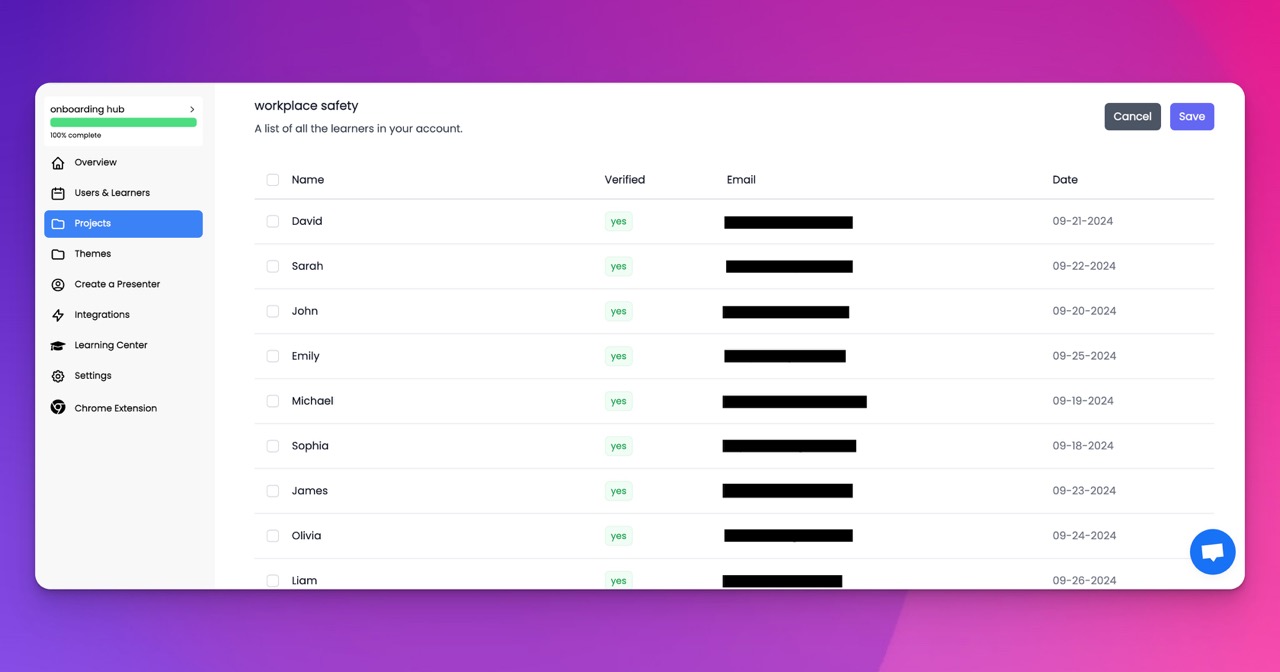🎉 Trainday now integrates with Zendesk and Hubspot 🎉 Trainday now integrates with Zendesk and Hubspot 🎉 Trainday now integrates with Zendesk and Hubspot
🎉 Trainday now integrates with Zendesk and Hubspot
🎉 Trainday now integrates with Zendesk and Hubspot
Contact
OSHA Compliance
"OSHA 510 Vs. OSHA 30: Understanding The Differences And Choosing The Right Course For Your Safety Career"
## OSHA 510 vs. OSHA 30: Understanding the Differences and Choosing the Right Course for Your Safety Career
In the ever-evolving landscape of workplace safety, the importance of comprehensive training cannot be overstated. The Occupational Safety and Health Administration (OSHA) provides several training programs aimed at enhancing the knowledge and skills of workers and supervisors in various industries. Two of the most notable courses are OSHA 30 and OSHA 510. While both are integral to fostering a safer work environment, they serve different purposes and audiences. Understanding the differences between OSHA 510 and OSHA 30 can help you choose the right course for your safety career.
### What is OSHA 30?
#### Overview
OSHA 30 is a 30-hour training program designed for supervisors and workers with safety responsibilities. It is part of the OSHA Outreach Training Program and covers a wide range of topics to ensure thorough knowledge of workplace safety and health hazards.
#### Target Audience
- **Supervisors**
- **Foremen**
- **Safety Committee Members**
- **Managers**
#### Content
The OSHA 30 course delves into a variety of topics including, but not limited to:
- Introduction to OSHA
- Managing Safety and Health
- Walking and Working Surfaces
- Fall Protection
- Electrical Safety
- Personal Protective Equipment (PPE)
- Hazard Communication
- Machinery and Machine Guarding
- Industrial Hygiene
- Ergonomics
#### Goals
The primary aim of OSHA 30 is to ensure that supervisors and workers with safety responsibilities are well-equipped to recognize, mitigate, and prevent workplace hazards. It focuses on the practical application of safety principles to create a safer work environment.
### What is OSHA 510?
#### Overview
OSHA 510, also known as the OSHA 510 Occupational Safety and Health Standards for the Construction Industry, is a more specialized course. It is typically a prerequisite for other advanced OSHA courses and certifications, such as the OSHA 500 Trainer Course for the Construction Industry.
#### Target Audience
- **Safety Professionals**
- **Construction Industry Workers**
- **Compliance Officers**
- **Project Managers**
- **Anyone seeking to become an OSHA-authorized trainer**
#### Content
OSHA 510 covers a comprehensive range of construction industry standards and regulations, including:
- OSHA Act and General Duty Clause
- General Safety and Health Provisions
- Occupational Health and Environmental Controls
- Personal Protective and Life Saving Equipment
- Fire Protection and Prevention
- Materials Handling, Storage, Use, and Disposal
- Tools and Equipment
- Scaffolds
- Cranes, Derricks, Hoists, Elevators, and Conveyors
- Excavations
- Concrete and Masonry Construction
- Steel Erection
#### Goals
The goal of OSHA 510 is to provide participants with a detailed understanding of OSHA standards applicable to the construction industry. This course is instrumental for those looking to deepen their expertise in construction safety and is a stepping-stone for those aiming to become OSHA-authorized trainers.
### Key Differences Between OSHA 30 and OSHA 510
1. **Scope and Focus**:
- OSHA 30 is broader and applicable to various industries, emphasizing general workplace safety.
- OSHA 510 is more specialized, focusing specifically on construction industry standards.
2. **Target Audience**:
- OSHA 30 targets supervisors, managers, and workers with safety responsibilities across different industries.
- OSHA 510 is geared towards safety professionals and individuals in the construction industry.
3. **Content Depth**:
- OSHA 30 covers a wide range of topics, providing a general understanding of safety and health hazards.
- OSHA 510 offers an in-depth exploration of construction-specific safety standards and regulations.
4. **Career Advancement**:
- OSHA 30 can enhance the safety skills of supervisors and managers, making them more effective at managing workplace safety.
- OSHA 510 is essential for those seeking advanced certifications or aiming to become OSHA-authorized trainers in the construction industry.
### Choosing the Right Course for Your Safety Career
When deciding between OSHA 30 and OSHA 510, consider the following factors:
1. **Industry**: If you are in the construction industry or planning to specialize in it, OSHA 510 is the better choice. For those in other industries or seeking a broader understanding of workplace safety, OSHA 30 is more appropriate.
2. **Career Goals**: If your goal is to become an OSHA-authorized trainer or to hold a specialized safety role in construction, OSHA 510 is crucial. For supervisory roles or general safety responsibilities, OSHA 30 is beneficial.
3. **Current Role**: Your current job responsibilities can guide your decision. If you are already in a supervisory or safety management role, OSHA 30 can enhance your skills. If you are a safety professional in construction, OSHA 510 will provide the specialized knowledge you need.
### Conclusion
Both OSHA 30 and OSHA 510 are valuable courses that contribute significantly to workplace safety. By understanding their differences and aligning them with your career goals and industry requirements, you can make an informed decision and choose the right course to advance your safety career. Investing in the appropriate OSHA training not only enhances your professional credentials but also plays a vital role in creating a safer work environment for all.
Accelerate Compliance.
Deliver OSHA-Ready Courses Instantly.
Empower your team with data-driven training solutions tailored to your industry's safety standards. Stay compliant, reduce risks, and boost productivity with AI-powered course creation.
